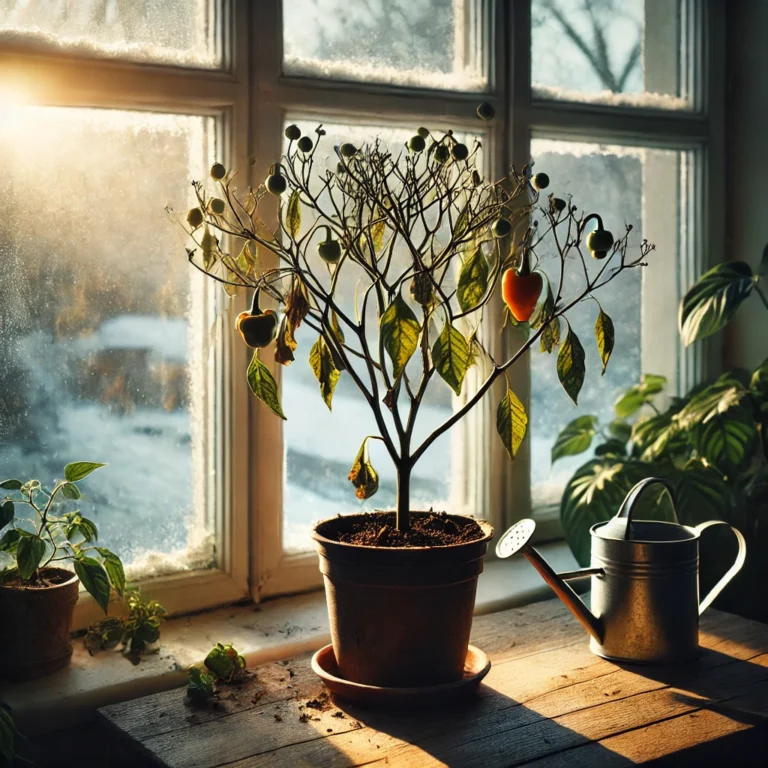🌿 1. Introduction: The Seed Sovereign’s Mindset
Every garden begins with a seed — a packet of potential waiting to be unlocked. Yet, in the age of convenience, most home gardeners and microgreen growers find themselves buying seeds repeatedly rather than mastering the art of renewal.
Microgreens — those tender, nutrient-packed shoots harvested just after germination — offer one of the fastest returns in gardening. They grow in days, not weeks. But ironically, their speed and ease can trap us in a cycle of consumption: buying seed → growing → harvesting → discarding.
The Seed Sovereign breaks that cycle.
When you save your own microgreen seeds, you enter a closed-loop system — a cycle of creation that pays dividends in resilience, self-sufficiency, and abundance. You stop being just a grower. You become the architect of your own food chain.
⚡ 2. Why Microgreens Are the Perfect Crop for Seed Regeneration
Microgreens are one of the fastest-growing plants on Earth — and that speed makes them uniquely positioned for seed independence.
Here’s why they’re ideal for regenerative seed saving:
- Short growth cycles. Most microgreens germinate in 2–5 days and are harvest-ready in 7–14.
- Diverse seed sources. Almost any edible seed — from radish to basil — can be grown as a microgreen.
- Small space requirement. You can produce an entire season’s worth of microgreens on a single shelf or window ledge.
- Rapid generation turnover. If you allow just a few plants to mature, you can collect thousands of new seeds within weeks.
- Genetic adaptation. Over time, saving your own seeds tailors plants to your microclimate, improving germination and vigor.
In short, microgreens are evolution on fast-forward — every tray a chance to refine genetics, flavor, and resilience.
🌎 3. Understanding the Microgreen Growth Cycle
To regenerate microgreens for seed, you must first understand their natural arc of life:
- Germination (Days 1–3) — The seed absorbs water, swells, and cracks open.
- Microgreen Stage (Days 7–14) — Cotyledons open; this is where most growers harvest.
- Vegetative Growth (Weeks 3–4) — True leaves emerge; photosynthesis ramps up.
- Bolting and Flowering (Weeks 5–8) — The plant shifts from growth to reproduction.
- Seed Maturation (Weeks 8–12) — Pods brown, dry, and fill with new life.
Each tray of microgreens is just the first chapter. Letting a few continue to full maturity lets you complete the entire story.
💰 4. The True Cost of Microgreen Seeds
Microgreen seed packets are convenient but costly — often 5–20× more expensive per ounce than bulk seed.
| Crop | Avg. Cost per oz | Seeds per Plant | Potential Yield | Est. Savings/Year |
|---|---|---|---|---|
| Radish | $8 | 1,000+ | 10,000+ | $80–120 |
| Arugula | $8 | 800+ | 8,000 | $70–100 |
| Mustard | $7 | 1,000+ | 10,000 | $70–90 |
| Amaranth | $15 | 5,000+ | 25,000 | $200+ |
| Peas | $4/lb | 150 | 1,200 | $30–40 |
| Sunflowers | $3/lb | 1,000+ | 10,000 | $25–35 |
Even a handful of mature plants can yield a year’s supply of seed.
🧱 5. Building the Seed Microfarm — Your Living Seed Bank
Dedicate one raised bed or container set to seed production.
Recommended Layout:
- Size: 4×4 ft (16 sq ft)
- Rotation: Alternate Brassicas with legumes for soil balance.
| Row | Crop | Days to Seed | Seeds/Plant | ROI Buff |
|---|---|---|---|---|
| 1 | Radish | 45–60 | 1,000+ | Fast Cycle |
| 2 | Mustard | 60–70 | 1,000+ | Flavor Boost |
| 3 | Arugula | 50–60 | 800 | Speed Bonus |
| 4 | Amaranth | 90–100 | 5,000+ | Luxury Color Buff |
| 5 | Sunflower | 90–110 | 1,000+ | Energy Buff |
| 6 | Peas | 70–90 | 100 pods | Protein Buff |
| 7 | Basil | 80–100 | 300 | Aroma Buff |
| 8 | Cilantro | 60–80 | 300 | Dual Herb Buff |
Only a few plants need to “go to seed” to refill your supply.
🌼 6. How to Let Microgreens Go to Seed
- Select the healthiest plants.
- Transplant them into soil or deep containers.
- Let them bolt naturally in sunlight.
- Allow pollination (self or insect).
- Wait for pods to dry.
- Harvest before pods shatter.
- Thresh and clean.
Each seed pod becomes a miniature treasure chest of future harvests.
🔥 7. Seed Drying and Storage
- Air dry 7–10 days in shade.
- Use paper envelopes or glass jars.
- Label with crop, variety, and date.
- Store in cool, dark, dry conditions (40–50 °F).
- Test germination yearly.
Average Lifespans
- Brassicas: 4–5 years
- Herbs: 2–3 years
- Legumes: 3 years
- Amaranth: 5 years
- Sunflower: 2 years
🧮 8. Economics and Yield Calculations
A small seed bed of 8 plants per variety can yield nearly 50,000 seeds, valued at $350–$450 USD annually.
Your cost? Essentially sunlight and soil.
That’s the power of seed sovereignty — abundance from almost nothing.
🌾 9. Sustainability and Soil Health Benefits
Saving seed strengthens ecosystems:
- Pollinators thrive on flowering crops.
- Soil biology deepens with longer root cycles.
- Local genetics adapt to your microclimate.
- Packaging waste disappears.
Seed saving isn’t only thrift — it’s regeneration.
🧬 10. Protecting Seed Purity — Preventing Cross-Pollination in Microgreen Crops
When multiple microgreen species bloom together, their pollen can mingle — creating hybrids that may not perform or taste the same.
🌸 How Cross-Pollination Happens
- Wind: Carries Brassica pollen long distances.
- Insects: Bees visit multiple flowers.
- Proximity: Closely spaced plants share pollen freely.
🧠 Why It Matters
Consistency is everything in microgreens — flavor, leaf shape, color, and germination time.
Cross-pollination can turn your reliable crop into an unpredictable mix.
🛡️ Ways to Prevent It
1. Spatial Isolation
Keep related flowering crops 50–100 ft apart.
If that’s impossible, allow only one variety to flower each season.
2. Physical Barriers
Use row covers or mesh cages around seed plants.
Inside, you can still pollinate manually with a soft brush.
3. Timing Control
Stagger plantings so only one variety blooms at a time.
4. Indoor Isolation
Let some plants flower indoors under grow lights to control pollen completely.
5. Diligent Labeling
Record each batch’s species, variety, and pollination method.
Example: “Radish – Cherry Belle (Isolated Mesh, 2025)”
🌾 Recommended Isolation Distances
| Family | Common Microgreens | Min. Distance | Notes |
|---|---|---|---|
| Brassicaceae | Radish, Mustard, Arugula, Kale | 100 ft | Wind/insect-pollinated |
| Apiaceae | Cilantro, Dill | 800 ft | Crosses rarely in small gardens |
| Amaranthaceae | Amaranth, Beet | 300 ft | Wind-borne pollen |
| Fabaceae | Peas, Beans | 10–20 ft | Self-pollinating |
| Lamiaceae | Basil, Mint | 100 ft | Bee-pollinated |
| Asteraceae | Sunflower | 200 ft | Bag heads to ensure purity |
If distance is limited, control pollen, not space — row covers and timing can accomplish the same goal.
🌻 Bagging Individual Seed Heads
Slip fine mesh or organza bags over flowers before they open.
Secure with twine, let them self-pollinate, and harvest when pods dry.
Simple, elegant, and foolproof for radish, amaranth, and cilantro.
“You can’t always stop pollen — but you can teach it manners.”
⚠️ 11. Common Pitfalls and How to Avoid Them
| Mistake | Result | Fix |
|---|---|---|
| Harvesting pods too early | Immature seeds | Wait until dry & brittle |
| Overdrying in sun | Killed embryos | Dry in shade |
| Storing damp seed | Mold growth | Air-dry completely |
| Saving from hybrids | Unreliable offspring | Use open-pollinated types |
| Mixed flowers | Cross-pollination | Isolate or bag blooms |
Even mistakes teach — each season improves your technique.
🧰 12. Tech & Tools for Modern Seed Keepers
- Humidity sensors for seed vaults
- Mini dehumidifiers or silica packs
- QR code labeling systems
- Digital seed journals (Excel, Airtable, or Notion templates)
- Solar micro-fridge drawers to extend viability
The blend of ancient practice and modern tech turns seed saving into science.
💫 13. The Spiritual & Practical Payoff
Saving microgreen seeds transforms the grower’s mindset.
You no longer just harvest — you participate in regeneration.
Watching radish pods dry and crack open becomes symbolic: the cycle of giving back.
It mirrors the FIRE philosophy — independence through renewal.
Each seed is both memory and promise.
“Harvest me now for food, or let me flower for the next generation.”
That choice turns gardeners into keepers of continuity.
🪴 14. Closing Thoughts: From Seed Buyer to Seed Keeper
If you’ve ever watched a tray of microgreens burst to life in five days, imagine that multiplied a thousandfold — not in greens, but in seeds.
Every saved seed is a declaration of independence.
It proves that your garden isn’t a linear system but a living circle.
Microgreens’ fast life cycle means you can test, save, and refine seed strains within a single season — evolution you can see in real time.
Through seed saving, you not only feed your family but future generations.
“He who guards the smallest seed holds the map to endless harvests.” 🌱




